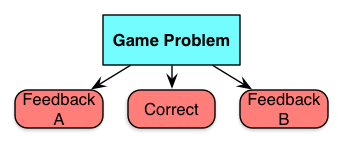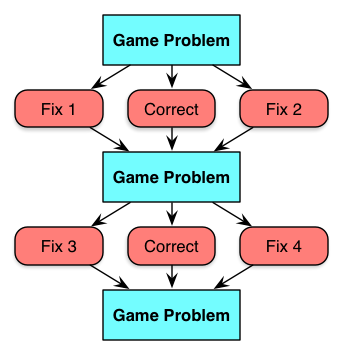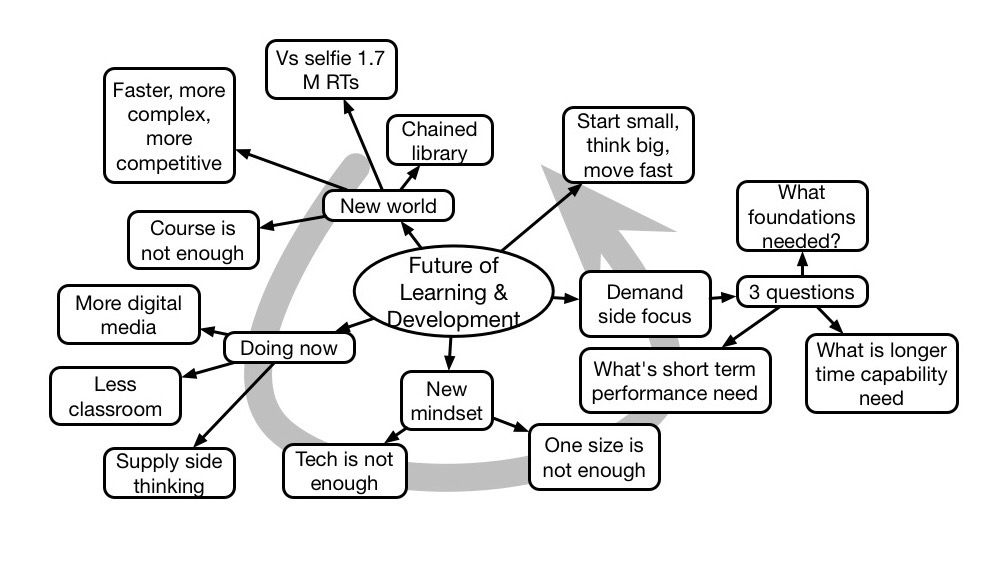I’ve been thinking about some of the talk around the Future of Work, and in addition to the free flow of information I recently posted about from the Coherent Organization, I think working out loud is another component. Inspired by a post from my colleague ITA Harold Jarche, this is how I see it, in actionable terms. (And I expect this is also part of Jane Bozarth’s Show Your Work, but I’ve yet to get my mitts on a copy, mea culpa.)
The point is to make your work visible. There’re two points: showing the actual goals, progress and status of your work, and showing the thinking that’s going on behind it. And there are two dimensions: within the organization, and outside the organization. Pragmatically, this yields some concrete and actionable elements.
First, there have to be mechanisms to share. Ideally, you don’t have to work and then separately post it, but instead your tools automatically share. This really means collaborative work tools, because you want people to be able to engage: at least commenting, and of course sometimes (maybe most of the time) you’ll be working in a team. Also tools that track contributions and changes. And there may have to be permissions: so some people can edit, some can only comment, etc.
And I wouldn’t assume folks know what it means to ‘narrate your work‘ (aka learn out loud). Here, I mean exposing the underlying elements. This includes the context, assumptions, considerations, experiments, and reflections. In User Interface Design, it was called Design Rationale, and it’s showing not only the current state, but how you got there. Benefits include others’ experiences, not revising early decisions when new team members are added, and more. The typical techniques of being explicit, modeling, evangelizing, promoting, etc, play a role here.
Then of course it has to be ‘safe’ to share, you can’t be working in a Miranda organization. If your work will be held against you in any way, you won’t want to share. This means culture and policies and more. Basically, you need to be working in a Learning Organization, where the elements are aligned to facilitate optimal engagement. This includes the practices about how to work out loud and learn out loud.
Another issue is how far to share. What can you share outside the organization? Harold talks about the essential requirement of sharing outside the workplace, and that can be a big concern. Obviously, proprietary work needs to be protected until it’s not business vulnerable. This means policies about what’s safe to share, and when. Certainly, ‘sanitized’ work, where critical details are obscured but the thinking is shown should be supported in going out to communities of practice. And the end result, when the business advantage isn’t threatened, could and should be shared through articles or webinars or conference presentations.
At the end, it’s a risk/reward tradeoff for any project at any time. What’s the benefit of getting feedback to improve versus what’s the downside of information getting out to competitors or exposing regulated data? At any point, with any particular version of ‘anonymizing’, the balance may tip one way or another. But the point is to be open to the benefit, and take advantage of it when and where you can. Getting systematic at making it a regular part of any project is likely to be key.
It’s what I do here, and I encourage you to work out loud as much as you can. So, any feedback so far?
#itashare





